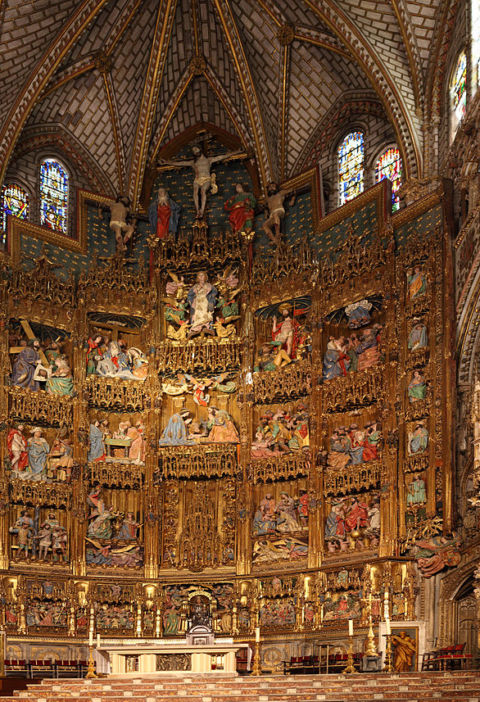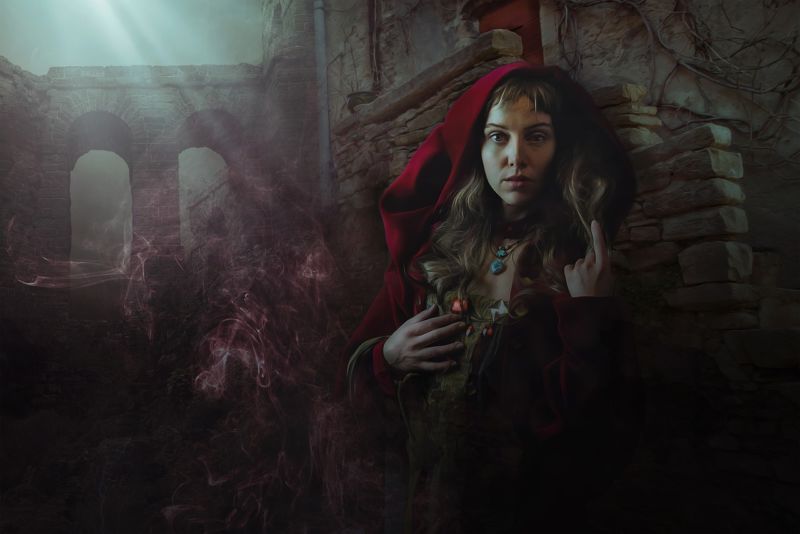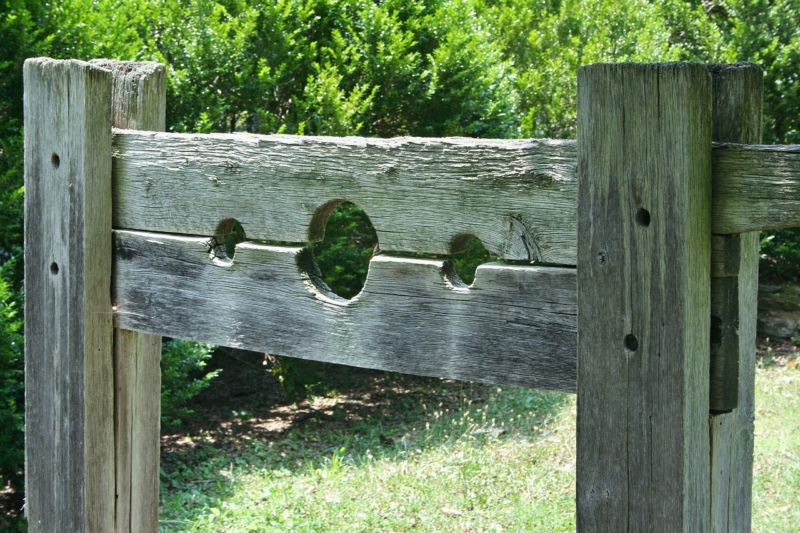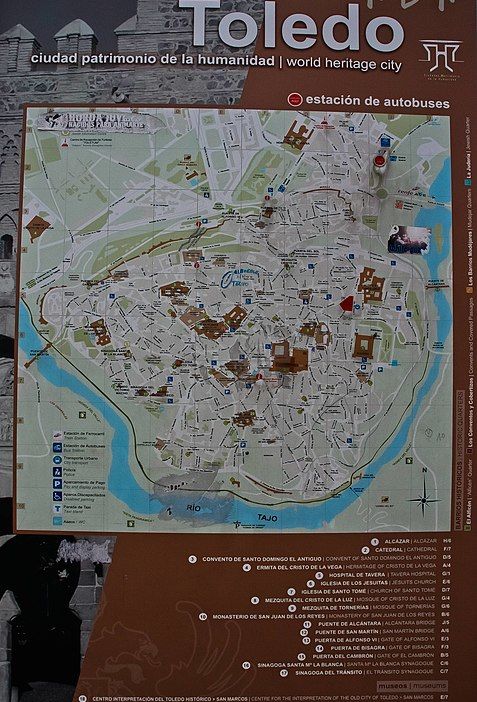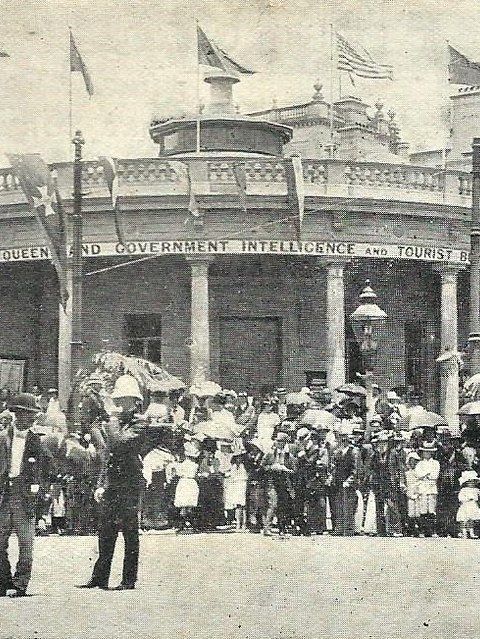Sometimes the traveller who visits Toledo and marvels with the history and the monuments that the city has, looks for something more; he looks for other corners and other landscapes offered by the province of Toledo where he can travel in time and enjoy such surprising environments as Consuegra for example.
We often recommend that visitors take a slight detour from the Los Viñedos motorway to discover this city located in the south of the province, just over 60 kilometres from the capital.
 Consuegra Castle
Consuegra Castle
Once we approach Consuegra, an arrogant, original, Manchego profile is discovered in the distance… This is Cerro Calderico, elevation of the land on which the city was created. This hill is famous all over the world for representing the typical scene of La Mancha spread by locals and strangers in advertisements, campaigns, social networks, etc. Our hill possesses one of the best preserved collections and numerous windmills of all Spain. 12 giants with their blades remind us how the man has taken advantage to his whim the elements and the force of the wind to acclimatize to an abrupt, dry and complicated ground. Giants that are not asleep, because more than one still works today and shows us astonished how the grain was ground in a real windmill.
Corridor BuildingAnd when the visitor enters the town, he will be surprised by the winding route of something that looks like a river, which divides Consuegra in two; the Amarguillo River. A funny river because it does not carry water, but serious because on several occasions it has shown its strength and its darker side flooding the population and dragging the lives of several hundred people.
And very close to the Amarguillo riverbed, in the area of the bus station, is where we can leave our car and start to walk and enjoy the streets of Consuegra.
Right there in the station itself, we find the Tourist Office where we can collect a map of the city to give us an idea of what can be visited and discovered. We go directly to the Plaza de España, where the 17th century Town Hall building tells us how stately Consuegra was in the 17th century.
An enormous arch gives access to this beautiful square which has a building that was a granary, town hall and many other things, the building of “Los Corredores”, today Municipal Archaeological Museum recently renovated and whose woods have witnessed so many appointments of priors, so many markets, festivals, celebrations, riots…
Municipal Archaeological Museum of Consuegra
If we want to find some traces of the Sanjuanist past by Consuegra (for some reason those knights of Malta were here almost seven), we must take the street of the Hospital that right at the end leads to what is called the Palace or House of the Tercia, ie the remains of what was formerly the residence of the prior of the order and from where the knights of St. John administered the villas that were part of the lordship.
The palace also had an area of warehouses where the grain, wine, oil and in general all the products on which the third part was charged as a tribute (hence the name “Palace of the Tercia” ).
St. John the Baptist Church
If there’s one thing the San Juan knights left us as an inheritance, it’s religiosity. They were knights and warriors, but also brothers or freires. Therefore we must visit several churches in Consuegra.
For example the one of San Juan Bautista, next to the river, raised by the Order of San Juan to give room to the population that was extending towards the south.
It preserves in its interior several crosses of eight points symbol for antonomasia of the Order of San Juan. In the main altar we will find different paintings from the 18th century when the parish underwent an important reform directed by the architect Juan de Villanueva.
In the centre is the Baptism of Christ by Antonio Martínez, with another to the left of San José with the Child and a third of San Joaquín to the right, both by José Beratón.
Hermitage Cristo de la Vera Cruz
Be careful because there is another hermitage closer to the centre, that of the patron saint, the Santo Cristo de la Vera Cruz, which for centuries has protected and assisted the Consaburenses. Its hermitage dates from the end of the 18th and beginning of the 19th century and was built on the site of an older one dating from the 16th century. In it there is an original religious museum that thanks to the Foundation of the Holy Christ of the Vera Cruz offers us different liturgical objects, such as sacred vases, clothing, paintings, and so on.
The image of the patron invites us to prayer, to silence. It is the Christ to whom the neighbours come to pray and whose great feast is celebrated on 21 September, a time of joy and fairs, laughter and dancing. Consuegra sows its calendar of celebrations and events, to which friends and strangers come to discover the hospitality and atmosphere that oozes the city.
For a few years now the festival of the spring onion, where we can taste this product so authentic that is planted in our fields (this year scheduled for 25 and 26 November).
For 55 editions there has also been another unique festival throughout Spain: The Rose of Saffron Festival, where another natural product and essential condiment such as saffron is valued and extolled.
The saffron rose,” says zarzuela, “is an arrogant flower that is born at sunrise and dies at sunset… If we are fortunate enough to visit the city around the month of October, we will be able to discover the purple and plagued fields of this saffron flower, whose ephemeral life is rewarded by the value paid for this spice so appreciated in half the world for its organic and nutritional characteristics.
Christ of the True Cross
Medieval Mother-in-law
But if there is one event in Consuegra that we shouldn’t miss and that has moved hundreds of participants every year since 1997 and has caused thousands of visitors to flock to the city and its castle, that is Medieval Consuegra; a parateatral recreation of the battle that occurred in front of the castle and in which the young son of the Cid Campeador, Diego Rodríguez, died.
Around August 15 of each year, the city returns to the Middle Ages to remember an entire feat in which the Castilian soldiers fought to the point of exhaustion against the Almoravid enemy.
Medieval Consuegra Event
If for example we travel to Consuegra in the month of January, we have to visit one of the districts with more solera of the city, located to the south of the population: The district of El Imparcial, where the festivity of San Antón is celebrated, in whose church of San Rafael there is a mass for the saint, with a procession included, as well as a luminary, where we will be able to remember the old festivities and celebrations that our ancestors carried out and that had the fire as protagonist.
On the other hand, if the traveller arrived in Consuegra during Holy Week, he could also discover the religiosity and devotion that his neighbours demonstrate with the participation of hundreds of them in the religious acts and processions that run through its streets.
Multitude of images preserved in the two main churches of the city, take the streets during those days to express the feeling that the Consaburenses put to their traditions.

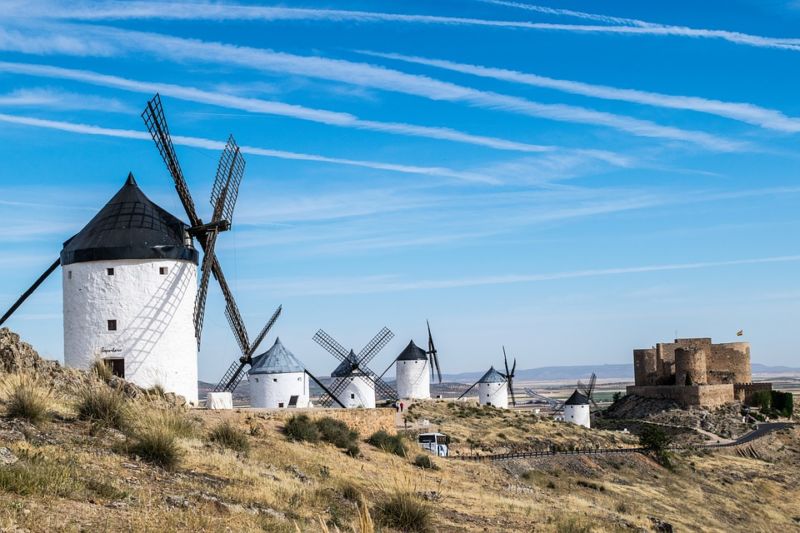
 Municipal Archaeological Museum of Consuegra
Municipal Archaeological Museum of Consuegra St. John the Baptist Church
St. John the Baptist Church Hermitage Cristo de la Vera Cruz
Hermitage Cristo de la Vera Cruz Christ of the True Cross
Christ of the True Cross Medieval Consuegra Event
Medieval Consuegra Event
